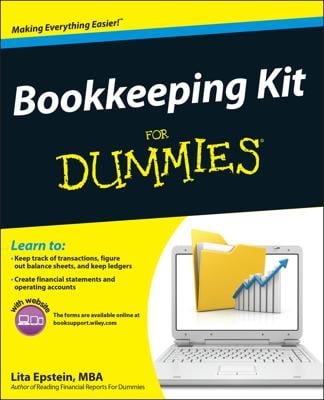Creating a Monthly Bookkeeping Checklist
Checklists are always useful when you’re a bookkeeper. They help to keep you on track for the day-to-day and month-to-month tasks that you need to carry out. Here is a list of tasks which you can adapt to create your own checklist.
- Enter sales invoices.
- Enter purchase invoices.
- Enter cheque payments.
- Enter bank receipts.
- Enter petty cash receipts.
- Reconcile bank accounts.
- Reconcile credit card accounts.
- Enter prepayments and accruals journals.
- Enter depreciation journals.
- Enter payroll journals (if required).
- Enter stock journals (if required).
- Run VAT return (if required).
- Run aged debtor and aged creditor reports.
- Run Profit and Loss statement.
- Run Balance Sheet.
- Check all reports for accuracy.
Following the Golden Rules of Bookkeeping
Some people find double-entry bookkeeping a bit tricky to start with, but stick to these simple golden rules and you’ll never be stuck when you need to create a journal.
- To increase an asset, debit the asset account.
- To decrease an asset, credit the asset account.
- To increase a liability, credit the liability account.
- To decrease a liability, debit the liability account.
- To record an expense, debit the expense account.
- To reduce an expense, credit the expense account.
- To record income, credit the income account.
- To reduce income, debit the income account.
Debit on the left, credit on the right.
Remembering Important Ratios for Bookkeeping
For bookkeeping purposes, there may come a time when you need to see how a company is doing. If you need to check the financial health of a company, you can analyse the accounts by using some or all of the following ratios.
- Net profit ratio: This indicates how much profit was earned for every £100 of sales revenue. The equation is as follows:
- Net profit ÷ Sales revenue = Net profit ratio
For example, a business earns £1.9 million net profit and has sales revenue of £52 million. The net profit ratio is 1.9 million divided by 52 million, which is £3.65 net profit for each £100 net profit.
- Return on equity: Tells you how much profit a business earned in comparison to the book value of the shareholder’s equity. Here’s the maths:
- Net profit ÷ Owners’ equity = Return on equity
If the net profit is £1.9 million and the owners’ equity is £15.9 million then the return on equity is 0.119 (£1.9 million ÷ £15.9 million), or 11.9 per cent expressed as a percentage.
- Current ratio: This ratio is a rough indicator as to whether the business has enough cash in hand (including the cash to be converted from stock and debtors) to pay off the liabilities within the next year. Here’s the equation:
- Current assets ÷ Current liabilities = Current ratio
Businesses are expected to maintain a ratio of 2:1, meaning they have twice as many assets as liabilities. As an example, if the business has £17.2 million in current assets and £7.9 million in current liabilities, the ratio would be £17.2 million divided by £7.9 million, which equals 2.2. The business wouldn’t need to worry because the financial position is fine.
Classifying Costs within a Business for Bookkeeping
Accountants must be aware of the different types of costs. Many different cost types exist within businesses, particularly manufacturing businesses. Following, you’ll find a selection of costs that an accountant might look at and analyse, as part of their role.
- Fixed cost: A cost that remains the same over a specified period, regardless of the level of production output; for example, rent.
- Variable cost: A cost that varies depending on the level of sales or production output. For example, if you increase the number of books sold, the cost of paper and ink increases.
- Direct cost: A cost that you can clearly attribute to either a product or service. For example, a direct cost in the book publishing industry is paper.
- Indirect cost: A cost you can’t specifically attribute to a product or service. For example, in the book publishing industry the cost of heating the building where the books are produced is an indirect cost of producing the books. It’s a cost of doing business, but you can’t specifically allocate it to a product.

